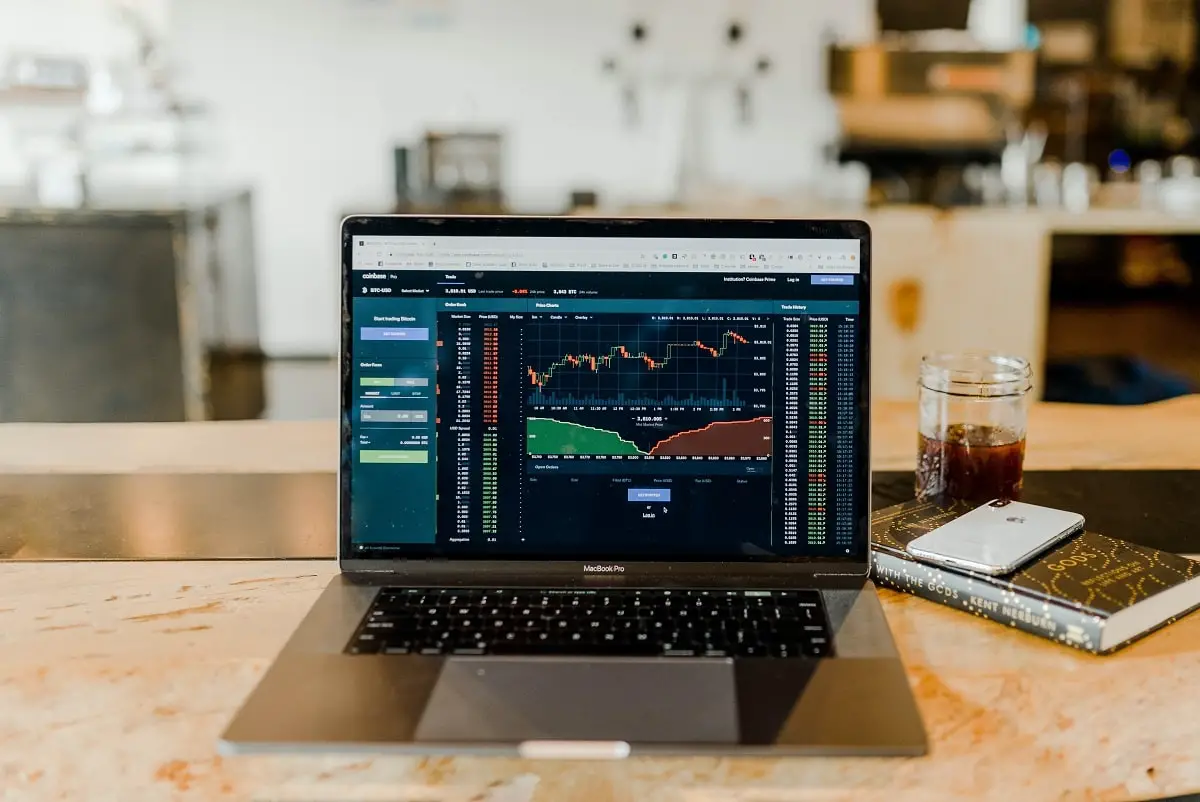All you need to know to buy shares online
If you’re looking for information on how to buy shares online, you’ve come to the right place. Buying shares of a company can be completely done online.
Table of Contents
Buying, selling and trading shares
What are the differences between buying, selling, and trading shares?
Buying shares: Buying involves finding a broker and placing an order to buy shares. You would want to buy at a lower price to profit if the stock price goes up.
Selling shares: If you already hold shares, you can sell them for a profit if you’d like to. If the price has increased significantly since you purchased the shares and if the market conditions look favorable for selling, that is, if you expect the price to drop, you can sell the shares and make a profit. Selling involves finding a broker and placing an order to sell shares.
Trading shares: Trading is the same as buying and selling, but it is done over shorter periods. With trading, the goal is to make smaller profits quickly. You also run the risk of making losses rapidly as well. If you’re a new investor, we recommend buying and holding your investments for a more extended period, i.e., six months to a year or more.
Related: Best value investing books
Steps to follow before buying shares
1. Understand how the stock market works
If you want to invest in stocks, you should understand how the stock market works. You should not panic when stocks go down or buy in a frenzy when stocks trade high. You can read books on investing to help you get started.
2. Research the stock
As an investor, it is a good idea to buy stocks in companies that you’re already familiar with and know well. If you are already using a company’s products and trust the brand, you can buy the company’s shares. Before you buy shares, you should take steps to research the stock and its fundamentals.
You should look at where the company gets its revenue from, how its growth looks like, and what its plans are. Most of this information will be available in the company’s annual report in the annual letter to shareholders. This letter will share the essential updates in the business. The SEC filings, conference call transcripts, quarterly earnings updates, and recent news are good sources of information to analyze a company.
The more analysis you do and the more information you have, you will make more intelligent decisions about investing in the company whose share you want to invest in.
3. Examine broader market conditions
You should also look at broader market conditions before you buy shares. If it is a bull market, the price will go up, and it would make sense to buy the stock immediately. If it is a bear market, the price will go down, and it might be better to wait to buy at a lower price.
How to buy shares – a step by step guide

Buying shares is a simple process, even for new investors. If you’re thinking of buying a company’s stock, you must decide whether you want to buy the stock for the short term or the long term. If you’re going to invest in the short term, you should perform a technical analysis of the stock, and if you want to hold the stock for the longer term, you should perform a fundamental analysis of the company. You should also keep yourself updated with news and with developments on the company. Here are the steps you need to follow.
1. Select a stockbroker
To buy shares online, you will need to use an online brokerage platform. In general, you should look at the following parameters before selecting a stockbroker.
- Stocks available for trading: The first criteria for selecting the broker is that you should be able to use the broker to trade the stocks you’re interested in.
- Commissions charged: Some brokers charge a higher commission, so if you want to maximize your profits, you would want to choose a broker with lower commissions.
- Account fees: You should also watch for other fees such as annual fees, inactivity fees, trading platform subscription fees, and fees for research or data. Brokers will also charge a fee for transferring cash or investments or for closing your account. You can avoid many of the fees by choosing a broker that doesn’t charge fees or by opting out of services that cost extra.
- Payment methods: Some brokers are more flexible in their payment methods than others. If you want flexibility in payments, this should be one of your criteria.
- Track record: You should choose a broker based on their track record. The broker that you choose should have a track record of reliability, and they should have been around for a while and have good reviews online.
- Open a brokerage account: This is the account in which your shares will be stored. Opening a brokerage account has become very simple. The steps vary from platform to platform, but you should be good to create your account once you provide your details and some form of identification. Again, the time taken to open an account varies between platforms.
2. Fund your brokerage account
The next step is to log in to your account and deposit money in your brokerage account. Most brokers accept bank and debit card transfers, and some accept transfers through other methods such as Paypal.
3. Decide how many shares you want to buy
If you’re a new investor, you could start small with a small amount and gradually increase your investment as you get more experienced in the stock market. You can also think about investing in fractional shares, which certain brokers offer. Buying a fractional share means you are purchasing a portion of the stock instead of the whole stock. If a share is too pricey, you can opt to buy a fractional share.
4. Choose your stock order type
All you have to do now is search for the company ticker, specify the number of shares, choose your order type and click on buy. Once you place your order, your broker will execute the order, and the shares will be listed in your account.
There are different order types you can place. Let’s look at the most commonly used ones, the market order and the limit order.
The market order instructs your broker to place an order at the prevailing market price. There are no price parameter restrictions on this order. You should use this order type for stocks that don’t experience wide price swings, generally larger company stocks. Stock prices can vary between seconds. If a slight price fluctuation does not matter to you, you should place a market order. If you place a market order trade “after hours,” when the markets have closed for the day, your trade will get executed the next day at the prevailing market price.
The limit order instructs your broker to place an order when the stock reaches a specific price point. It gives you control over the price at which your trade is executed. For example, if a stock is trading at $200, but you value the company at $180, the limit order tells your broker to wait till the stock reaches $180. Limit orders are suitable for smaller company stocks that experience wide price swings.
5. Review your position periodically
Once you have purchased the shares, you should monitor the stock according to your investment strategy. You should follow the company’s quarterly and annual results and the news and developments in the company.
Related: Best Investment Apps
Final Thoughts
Investing always comes with certain risks. You can reduce risks by diversifying your portfolio and by avoiding scams by choosing a reliable broker. To recap, you can buy shares by selecting a broker, opening a brokerage account, depositing money in your brokerage account, purchasing shares by placing an order, and reviewing your position periodically.






